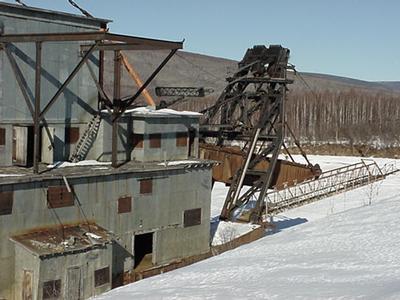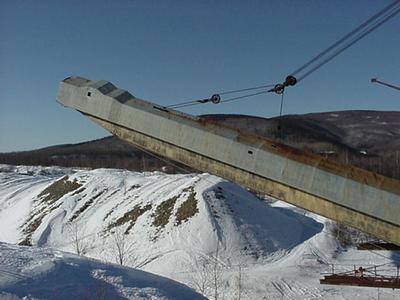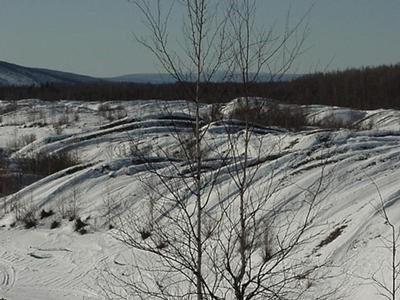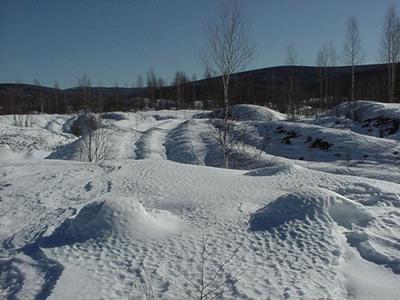19 March, 2002
Whining About Mining
The state of Alaska is rich in natural resources. For over a century, people
have sought out its great wealth of riches: wildlife, forests, minerals, and
petroleum. The isolated and harsh environment failed to dissuade early
prospectors and fortune seekers from coming north and establishing camps and
trading posts. Hundreds of miners came to what is now Alaska (which didn’t
become a state until 1959) in hopes of finding gold.
In 1901, E.T. Barnette headed north on the steamboat “Lavelle Young” in
hopes of establishing a trading post at the point now known as Tanacross.
Unfortunately for Barnette, the Tanana River could not be passed and the
Chena River was far too shallow. Barnette and all of his supplies were
dumped on the banks of the Chena River at a point we now call Fairbanks.
However, Barnette’s misfortune turned to fortune when the Italian immigrant
Felix Pedro discovered gold in the region. Within five years, Barnette’s
trading post became the busiest city in Alaska, with a hospital, two
newspapers, and a school. By 1906, the city already had ten thousand
residents. Even more amazing: that year prospectors in the region extracted
nine million dollars worth of gold from the hills around the city!
(Trivia Question: The city of Fairbanks was named after a U.S. vice
president. Under which president did Fairbanks serve?)
The slow and simple technique of panning gave way to a more mechanized way
of extracting gold from ore - the Dredge. Gold dredges (see photo below)
were used during the 1920’s and 1930’s. These massive steel vessels (usually
100 feet long, weighing over 1,000 tons) were used to process crushed stone
and to separate the more dense parcticles of gold.
Although the “rush” is now over, there is still gold in “them thar hills”.
NovaGold in Southwest Alaska (140 miles northwest of Bethel) announced this
week that it should be able to produce one million ounces of gold at its
Donlin Creek project, which could keep the mine operating for another 20
years.
Even today, the gold mining process requires the movement of tons of rock in
order to obtain small amounts of the mineral. Modern day extraction also
involves expensive and toxic chemical processes that remove impurities and
which separate microscopic bits of gold from the surrounding rock. An ounce
of gold is currently worth about $290, but the cost of extracting that gold
runs anywhere from $175 to $210 per ounce.
_________________________________________________________________
Join the world’s largest e-mail service with MSN Hotmail.
http://www.hotmail.com

Evidence of the destructive nature of mining. _________________________________________________________________ Join the world’s largest e-mail service with MSN Hotmail. http://www.hotmail.com

A gold mining dredge, still floating in the creek from which it operated decades ago. Fully loaded it probably displaced over 1,000 tons. _________________________________________________________________ MSN Photos is the easiest way to share and print your photos: http://photos.msn.com/support/worldwide.aspx

This end of the dredge scooped up surrounding sediments. _________________________________________________________________ Join the world’s largest e-mail service with MSN Hotmail. http://www.hotmail.com

This is end of the dredge that spewed out the waste rock or "tailings". The dredge had air compressors and on-board pumps that were fueled by a coal-fired boiler. The dredge itself was powered by electricity. _________________________________________________________________ Send and receive Hotmail on your mobile device: http://mobile.msn.com

Tailings piles dot the landscape around Fairbanks... _________________________________________________________________ MSN Photos is the easiest way to share and print your photos: http://photos.msn.com/support/worldwide.aspx

often as far as the eye can see. _________________________________________________________________ Join the world’s largest e-mail service with MSN Hotmail. http://www.hotmail.com
Contact the TEA in the field at
.
If you cannot connect through your browser, copy the
TEA's e-mail address in the "To:" line of
your favorite e-mail package.
|
